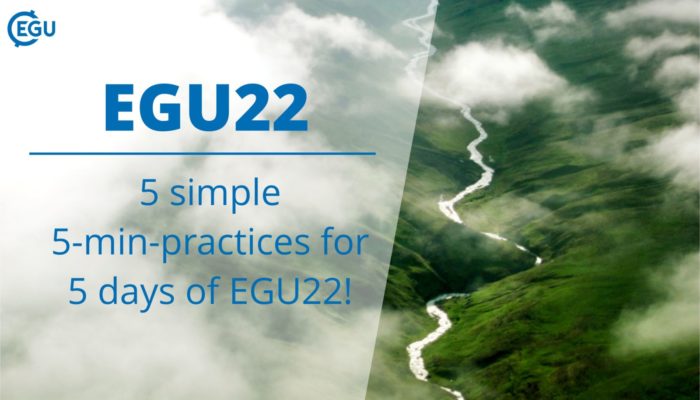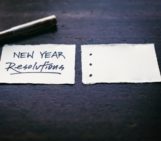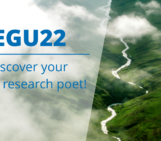
New year, new science, and a new format of the General Assembly!
While the ‘scientific’ planning of the week is a rather straightforward process of browsing the conference program, planning your breaks may be an afterthought or go completely forgotten. Whether you’re a first-time attendee at the General Assembly this year or have joined us in previous years (and felt exhausted by the end of it!), we have some smart tips for you to better balance your time during the conference week.

While soaking up the conference buzz and scientific content, remember that your brain could use an occasional slowing down. Source: Unsplash.
Some general preparation
Luckily, this year’s hybrid format offers some way to stress less: you can already upload your presentation material now and view all the uploaded materials even after the conference has taken place. So no need to attempt working long hours during the General Assembly. Generally, you can prevent a lot of last-minute stress during EGU22 by planning beforehand.
Last year, we were already provided with some great advice on balancing your life while attending the GA from home. One of them being the mystery of multitasking and the value of turning off your notifications and only checking them in breaks between sessions. This year, there is also a great summary on what you need to know if you are attending the GA in Vienna with kids. And not to be forgotten: the events organized by the EGU Work-Life Balance group:
Short Course: Scared of giving presentations? (SC3.6)
- Monday, 13:20–14:50 (CEST)
- https://meetingorganizer.copernicus.org/EGU22/session/43163
Short Course: Mind your Head: mental health and the academic working environment (SC1.3)
- Tuesday, 8.30-10.00 (CEST)
- https://meetingorganizer.copernicus.org/EGU22/session/43142
Pop Up Event: Move, Stretch and Lunch in the Park
- Tuesday, 12-12.30, in the Park
So now let us start planning our short 5-minute breaks of the week:
Monday: Relax your eyes
Seeing a presentation from the last row or scanning posters for details can be hard work for our eyes. When looking at presentation slides or posters, we often tend to stare at the same spot for a long time, drying our eyes out, which can lead to headaches and brain fog. Then, closing our eyes feels relieving, even if it is only for a few seconds. To create one of these moments of relaxation, you can simply cover your eyes with your hands and take a few deep breaths. Some flexibility exercises in addition can help to ease any pain in your eye muscles and might even improve your vision in the long run.
Tuesday: Get moving!
Whether you are attending EGU22 from home or joining us in person, a conference can include a lot of sitting time! So let’s get moving: at the spot next to your desk, in a circle through your room or, when on-site, through the conference center. Try to move every muscle in your legs since sitting all day is said to significantly impact our health. Alternatively, you can try listening to a few sessions while standing in the back of the conference room or with the laptop on a high drawer (not to mention the luxury of a height-adjustable table).
Wednesday: Meditate over tea or coffee
We have all been there – a good cup of coffee can help us through an intense workday. But while we often take it for granted, it can be a great way to create a calm break for the brain and, if you like, cultivate a little bit of gratitude. So, celebrate the mid of week by taking 5 minutes with a fresh steaming cup (teas are allowed as well of course). No phone, no chatting, no multitasking. Just enjoy your cuppa!
Thursday: Stretch time!
Sure, conferences like EGU22 will certainly get our mental juices flowing, but they can be challenging for our body, especially since it is a week-long event. If you didn’t feel it on Monday yet, come Thursday you might: sitting a lot makes our body feel stiff and sometimes even ache. To prevent this or to help ease the tension, it is great to do some stretches from time to time. And guess what? You don’t even have to stand up for this!
Friday: Take a deep breath and get ready for the weekend
Of course, the superstar of the week has been our incredible neural network, the brain, which has had fireworks during 5 full days of science talks. But by taking in session after session, we might reach our processing capacity and things may start to get blurry. Now is definitely the best time to allow our thoughts to settle down and give our brain the much-needed break it deserves.
We hope you try these tips during the conference week. Do you have any suggestions to add to this list? Let us know in the comments below!
Authors:
Maria Scheel is a PhD student at Aarhus University in Denmark. Her current research explores how permafrost microorganisms adapt to the ongoing thaw and erosion in Northeast Greenland. Besides that, she currently is a representative for APECS Denmark and recently started her blog Mindful Scientist, sharing experiences and raising awareness about a healthy mind at work. She tweets as @Maria_Scheel_. Contact email: maria.scheel@ecos.au.dk.
Selina Kiefer is a PhD student at the Karlsruhe Institute of Technology (KIT) in Germany. Her work focuses on the subseasonal- to seasonal forecast of Central European weather using machine learning models. She is an active member of the EGU Work-Life-Balance group. You can reach her via e-mail at selina.kiefer@kit.edu




